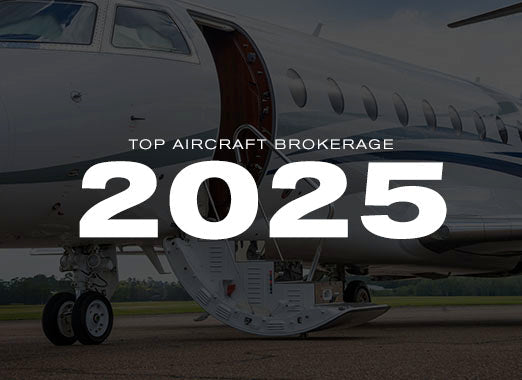In the competitive market of ultra-long-range business jets, few names carry the same weight as Gulfstream. The Savannah, Georgia–based manufacturer has consistently shaped the top end of the private aviation sector with aircraft that combine range, performance, and passenger comfort. The Gulfstream G700, launched to much anticipation, quickly became a benchmark for the industry. Its cabin size, aerodynamic refinements, and Symmetry Flight Deck placed it at the forefront of technological and operational standards.
With the entry into service of the G800 in 2025, Gulfstream has extended its product line further, not by replacing the G700 but by augmenting its capabilities. The G800 now holds the distinction of being the world’s longest-range business aircraft, building upon the platform established by the G700 while delivering improvements in efficiency, speed, and cabin environment. For operators, the comparison between the two models highlights both Gulfstream’s product strategy and the shifting expectations of the market.
The G700: Establishing a Benchmark
When Gulfstream announced the G700 in 2019, it positioned the aircraft as the company’s new flagship. The jet featured the largest cabin in the Gulfstream family, a maximum range of 7,500 nautical miles (13,890 km) at Mach 0.85, and a high-speed cruise capability of Mach 0.90. Designed to compete directly with Bombardier’s Global 7500, the G700 offered a blend of performance and interior volume that appealed to both corporate and private buyers.
The aircraft entered service with program maturity, backed by Gulfstream’s extensive testing and certification campaigns. Its adoption was bolstered by features such as the Symmetry Flight Deck™, incorporating active control sidesticks and extensive touchscreen avionics, and the ability to configure the cabin into multiple zones to accommodate both business and leisure missions.
By 2024, the G700 had secured a solid reputation in the marketplace. Operators praised its dispatch reliability, cabin environment, and ability to execute nonstop missions between distant city pairs. For Gulfstream, the G700 was not just a product but a bridge toward the company’s next-generation lineup.
The G800: Extending the Horizon
Announced as part of Gulfstream’s new product strategy, the G800 was designed to be the ultimate expression of ultra-long-range capability. Rather than simply enlarging the G700’s performance envelope, the G800 introduced refinements that made it the most capable aircraft in its class.
Certified by both the Federal Aviation Administration (FAA) and the European Union Aviation Safety Agency (EASA) on April 16, 2025, the G800 set new benchmarks:
-
8,200 nm (15,186 km) range at Mach 0.85
-
8,000 nm (14,816 km) range at Mach 0.87
-
7,000 nm (12,964 km) range at Mach 0.90
-
Maximum operating speed: Mach 0.935
These figures positioned the G800 ahead of both the G700 and its direct competitors. The ability to sustain long-range missions at multiple cruise speeds gives operators flexibility: maximizing fuel efficiency when needed or prioritizing shorter block times when speed is the higher value.
Cabin Environment and Passenger Experience
One of the defining elements of Gulfstream’s new generation is the emphasis on cabin wellness. While the G700 delivered significant improvements in cabin altitude, air quality, and acoustic treatment, the G800 advanced those standards further.
Recently awarded the 2025 International Yacht & Aviation Award for Private Jet Design, the G800 features the industry’s lowest cabin altitude of 2,840 ft (866 m) at 41,000 ft (12,497 m). The aircraft provides 100% fresh air circulation through an advanced environmental control system, enhanced by plasma ionization air purification technology. This ensures reduced fatigue and improved comfort on flights lasting upwards of 14 hours.
The G800 also incorporates 16 Gulfstream Panoramic Oval Windows, the largest in business aviation, offering greater natural light and exterior visibility. Configurations include up to four living areas or three living areas with a dedicated crew compartment, allowing for operational flexibility between executive missions and private family use.
By contrast, the G700 remains highly competitive in its cabin environment, but the G800’s refinements — particularly in cabin altitude and design flexibility — underline Gulfstream’s intention to incrementally enhance passenger experience with each successive model.
Avionics and Flight Deck
Both the G700 and G800 are equipped with Gulfstream’s Symmetry Flight Deck™, one of the most advanced cockpits in business aviation. The system introduces a high degree of commonality across Gulfstream’s new-generation aircraft family, reducing pilot training costs and improving fleet flexibility.
Key features include:
-
Active Control Sidesticks (ACS): Replacing traditional yokes, the ACS system provides tactile feedback between pilots, improving coordination and situational awareness.
-
Touchscreen Avionics: More than 10 touchscreen displays reduce reliance on mechanical switches and enable intuitive interface design.
-
Predictive Landing Performance: A safety enhancement that calculates landing performance in real time, helping crews make informed decisions in challenging conditions.
-
Enhanced Flight Vision System (EFVS): Dual HUDs and synthetic vision allow certified operations to touchdown in lower visibility, reducing delays and diversions.
For operators transitioning from the G700 to the G800, cockpit commonality ensures minimal retraining. From an airline-style operational perspective, this creates efficiencies for flight departments managing multiple Gulfstream types.
Program Development and Certification
The G700’s development program laid critical groundwork for the G800. Gulfstream invested heavily in flight testing, systems validation, and completions processes, allowing the G700 to enter service with what the manufacturer termed “extraordinary program maturity.”
The G800 followed a similar path. The April 16, 2025, dual certification from the FAA and EASA was achieved after an extensive test campaign, including cold weather operations, high-elevation airport trials, and intercontinental route proving. Gulfstream emphasized that the aircraft demonstrated performance exceeding initial projections, particularly in maximum operating speed, which was certified at Mach 0.935.
The first customer delivery on August 27, 2025 took place at Gulfstream’s Appleton, Wisconsin completions facility, highlighting the role of that site in the company’s strategy. Appleton’s large-cabin completions center, custom-built paint hangar, and modernized MRO infrastructure position it as a cornerstone of the G800 program.
Comparative Market Positioning
The G700 and G800 do not directly compete with each other but rather complement Gulfstream’s lineup. The G700 remains attractive for buyers prioritizing cabin size and range sufficient for most intercontinental missions, while the G800 appeals to operators requiring the absolute longest range and highest speed in the market.
Competitor analysis:
-
Bombardier Global 7500: With a range of 7,700 nm at Mach 0.85 and a maximum speed of Mach 0.925, the Global 7500 remains a formidable competitor. However, the G800 surpasses it on both range and speed.
-
Dassault Falcon 10X: Currently in development, the Falcon 10X will feature a spacious cabin and a 7,500 nm range. Its design focuses heavily on cabin volume and comfort, but it falls short of the G800’s range capabilities.
-
Legacy Ultra-Long-Range Jets: Aircraft such as the G650ER, once considered the pinnacle, now face obsolescence compared to the G800’s performance envelope.
From a market perspective, the G800 positions Gulfstream as the sole manufacturer with an aircraft capable of consistently flying 8,200 nm missions, consolidating its leadership at the very top of the category.
Delivery Milestone and Customer Demand
The August 27, 2025, delivery marked the G800’s formal entry into service. Gulfstream President Mark Burns stated:
“We have seen astounding demand for the G800, and the entire Gulfstream team is excited to begin making deliveries to our customers. The G800 is entering service with extraordinary program maturity, just like the Gulfstream G700 before it. We look forward to customers around the world experiencing the aircraft’s remarkable capabilities and cabin comfort.”
Industry sources suggest Gulfstream’s early order book for the G800 is strong, with multiple undisclosed customers taking delivery slots stretching into 2027. Operators cite the ability to connect city pairs such as New York–Johannesburg or Los Angeles–Sydney as key motivators for selecting the aircraft.
Cabin Design in Detail
The G700 already provided one of the most spacious cabins in the segment, but the G800 brings refinements that improve passenger wellbeing on flights lasting more than 14 hours.
-
Cabin Altitude: At 41,000 feet, the G800 maintains a cabin altitude of 2,840 feet — lower than any other aircraft in its class.
-
Fresh Air: The environmental control system delivers 100% fresh, never recirculated air.
-
Air Purification: Plasma ionization technology removes airborne bacteria, allergens, and odors.
-
Windows: Sixteen oval windows, strategically placed to align with seating, maximize natural light and views.
-
Configurations: Options for four living areas, or three with a dedicated crew rest compartment, provide flexibility for executive, leisure, or mixed-use missions.
The 2025 International Yacht & Aviation Award for Private Jet Design recognized these innovations, affirming Gulfstream’s design leadership in both functionality and aesthetics.
Sustainability and Future Outlook
Like the G700, the G800 is certified to operate on sustainable aviation fuel (SAF), reflecting Gulfstream’s broader environmental commitments. The aircraft’s advanced aerodynamics and new-generation Rolls-Royce Pearl 700 engines contribute to lower emissions and improved efficiency.
Gulfstream has articulated a strategy of achieving net-zero carbon emissions by 2050, and the G800 is positioned as a key component of this initiative. For corporate operators facing increasing environmental scrutiny, the G800’s SAF compatibility and efficiency metrics provide tangible benefits.
Conclusion
The Gulfstream G700 redefined expectations when it entered service, but the G800 extends those expectations into new territory. With greater range, higher speed, and a more refined cabin environment, the G800 establishes itself as the new flagship of the Gulfstream fleet and the world’s longest-range business aircraft.
While the G700 will remain an attractive option for many operators, particularly those prioritizing cabin size, the G800 represents the next leap forward for clients requiring true global reach without compromise. With certifications complete and deliveries underway, Gulfstream has once again raised the bar for ultra-long-range business aviation.



